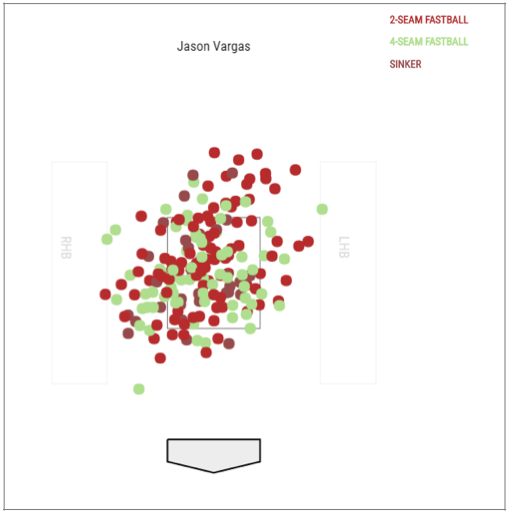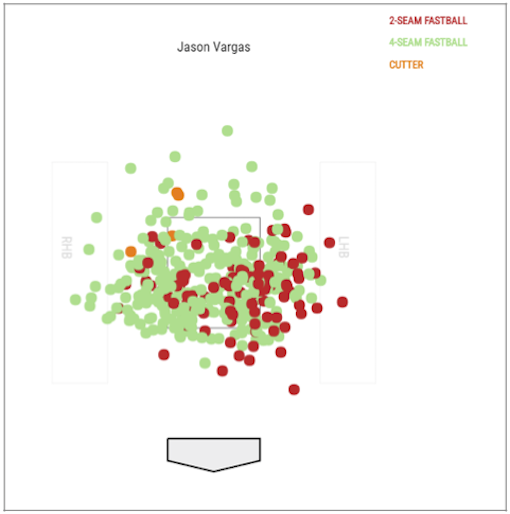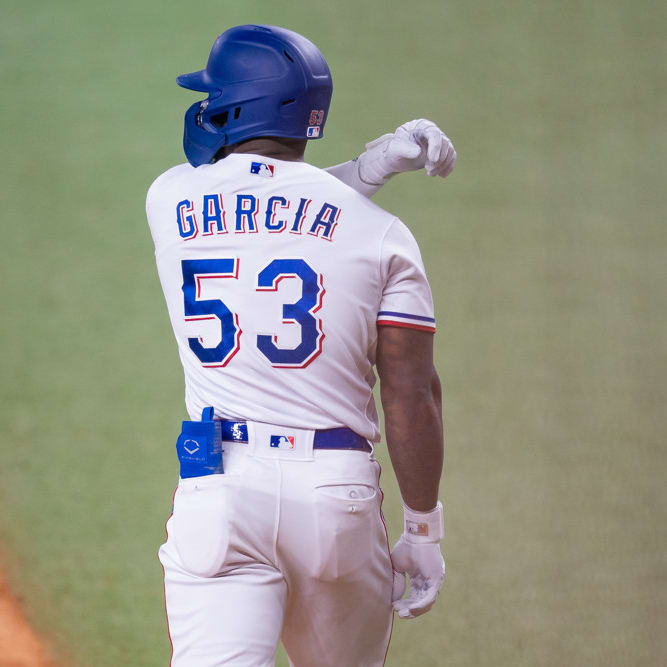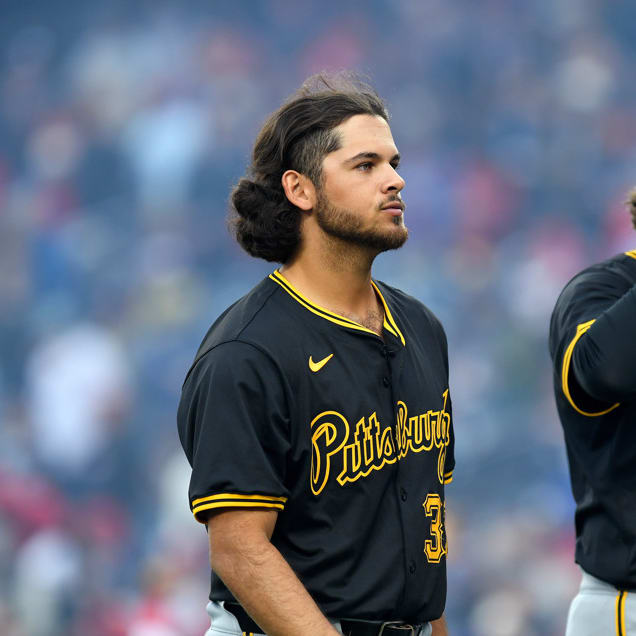This article is part of our Collette Calls series.
It is true that nothing is impossible, but there is a reason there are projections. Those are not numbers pulled out of thin air. They are numbers based off previous history and regressed and sniff-checked against recent history and trends to see if the guesstimates are within the proverbial ballpark. We are seeing many statistical oddities this early in the season, but it does help to compare them against history to see how frequently it has happened in recent years.
Given the fact that baseball is evolving at a rapid rate in recent years with velocity increasing more rapidly than my son's shoe size, I prefer to stay within the same decade of statistics rather than go too far back to further muddy the waters. For this week's column (using stats as of April 23), I'll look at some early leaders for strikeouts from the mound.
When I target starting pitchers, I like to set my threshold at 20 percent for strikeout rate. The best pitch is not just strike one, it is any pitch a batter cannot put into play whether it is in the strike zone. There are different paths to that method of
It is true that nothing is impossible, but there is a reason there are projections. Those are not numbers pulled out of thin air. They are numbers based off previous history and regressed and sniff-checked against recent history and trends to see if the guesstimates are within the proverbial ballpark. We are seeing many statistical oddities this early in the season, but it does help to compare them against history to see how frequently it has happened in recent years.
Given the fact that baseball is evolving at a rapid rate in recent years with velocity increasing more rapidly than my son's shoe size, I prefer to stay within the same decade of statistics rather than go too far back to further muddy the waters. For this week's column (using stats as of April 23), I'll look at some early leaders for strikeouts from the mound.
When I target starting pitchers, I like to set my threshold at 20 percent for strikeout rate. The best pitch is not just strike one, it is any pitch a batter cannot put into play whether it is in the strike zone. There are different paths to that method of success, but throwing a first-pitch strike is a good place to start. If you cannot do that, you can fight your way back into the count by generating swinging strikes or by getting batters to miss pitches within the strike zone.
Those are the areas I will consider for the current list of pitchers with at least a 20 percent strikeout rate. Believe it or not, that list of starting pitchers is 54 pitchers deep already this season. Chris Sale leads it while Matt Andriese brings up the rear.
Here is the group with at least a 30 percent strikeout rate the season (in order): Chris Sale, Danny Salazar, Luis Severino, Wade Miley, Jacob deGrom, Michael Pineda, Max Scherzer, Jason Vargas, Lance McCullers, James Paxton, Clayton Kershaw, Carlos Martinez, Robbie Ray.
Most of the usual suspects are on that list, but two pitchers stand out from the rest of the group -- Miley and Vargas. Both are similarly slinging lefties that work up and down and around the fringes of the strike zone without much velocity. Yet, there they are in the Baker's Dozen of pitchers with the more illustrious stuff and bigger velocities. The burning question is just how are they getting this done?
| PITCHER | K% | SwStr% | Z-CONTACT% | F-STRIKE% |
| Chris Sale | 39 | 16 | 75 | 68 |
| Danny Salazar | 36 | 17 | 76 | 59 |
| Luis Severino | 36 | 11 | 86 | 59 |
| Wade Miley | 33 | 9 | 92 | 65 |
| Jacob deGrom | 32 | 18 | 70 | 60 |
| Michael Pineda | 32 | 14 | 86 | 76 |
| Max Scherzer | 31 | 16 | 78 | 62 |
| Jason Vargas | 31 | 13 | 74 | 65 |
| Lance McCullers | 31 | 12 | 88 | 60 |
| James Paxton | 31 | 14 | 78 | 64 |
| Clayton Kershaw | 30 | 12 | 88 | 69 |
| Carlos Martinez | 30 | 13 | 83 | 55 |
| Robbie Ray | 30 | 11 | 87 | 59 |
It is going to be tough for most of these pitchers to continue striking batters out at this rate, but let's focus on the two crafty lefty veterans.
| PITCHER | K% | SwStr% | Z-CONTACT% | F-STRIKE% |
| Wade Miley | 33 | 9 | 92 | 65 |
| Jason Vargas | 31 | 13 | 74 | 65 |
Both pitchers are getting that all-important first strikes early in the count, but that is where the similarity ends. Vargas is getting more swings and misses overall and fares better when he has to throw a strike than Miley, who is very hittable in the zone.
Vargas has not gained any velocity since returning from his surgery, but he has changed his fastball mixture to use more four-seamers than two-seamers:

The rest of his utilization is the same, but he has definitely changed the way he has used his fastball. Not only is he using more four-seamers than two-seamers, he has changed the location of the fastball. Two years ago, Vargas worked in and out with the fastball. Nowadays, he works more up and down than anything else.
 |  |
| 2017 | 2015 |
Fastballs up in the zone look faster than those thrown lower in the zone, thanks to the effect of effective velocity. Vargas is doing it well by changing eye levels and adding perceived velocity to his average fastball by working it up in the zone rather than playing side to side.
Miley, on the other hand, is using more velocity. His average fastball velocity last season was 89.8 mph but he is at 92.3 mph entering Tuesday. He too has flipped his fastball mixture to use more four-seam fastballs but has also dropped the use of his changeup and is throwing more sliders.
The problem for Miley is that when he has to come into the zone, he is hittable so he has to pitch from ahead to be successful so he can get batters to expand their zone. When he falls behind, he is honestly better off walking batters because he does not have the stuff to get the swing and miss when he needs it, and he is not getting those this season.
The strikeouts are nice, but they're not built to last. Here is how Miley compares to other pitchers this season with SwSTR% of no higher than 10 percent:
| PITCHER | K% | SwStr% |
| Wade Miley | 33 | 9 |
| Jerad Eickhoff | 25 | 10 |
| John Lackey | 25 | 10 |
| Edinson Volquez | 25 | 10 |
| Brandon McCarthy | 24 | 9 |
| Michael Fulmer | 23 | 10 |
| Justin Verlander | 22 | 9 |
| Jon Lester | 22 | 9 |
| Lance Lynn | 21 | 10 |
| Jimmy Nelson | 21 | 8 |
| Ervin Santana | 20 | 9 |
| Shelby Miller | 20 | 10 |
| Gio Gonzalez | 20 | 9 |
| Derek Holland | 20 | 8 |
| Matt Andriese | 20 | 10 |
Miley is the outlier of the group, but it is not apparent what makes him so much different from the rest of the group that he can sustain his high strikeout rate despite his low amount of swings-and-misses. The last six seasons, the highest strikeout rate for a starting pitcher with a SwSTR% no higher than 10 percent belongs to Cliff Lee at 25 percent. If you have enjoyed Wade Miley to date, it is time to cash in your chips.
Conversely, a few pitchers have a low strikeout rate in relation to a rather high SwSTR%.
Danny Duffy has a decent 21 percent strikeout rate despite a very high 15 percent SwSTR%. That figure ranks him fifth in baseball in SwSTR%, but he is trailing his whiffy contemporaries in strikeout rate. The same can be said for Michael Pineda and Chad Kuhl:
| PITCHER | K% | SwStr% |
| Jacob deGrom | 32 | 18 |
| Danny Salazar | 36 | 17 |
| Max Scherzer | 31 | 16 |
| Chris Sale | 39 | 16 |
| Danny Duffy | 21 | 15 |
| Jason Vargas | 29 | 15 |
| James Paxton | 31 | 14 |
| Sean Manaea | 27 | 14 |
| Noah Syndergaard | 29 | 14 |
| Michael Pineda | 32 | 14 |
| Masahiro Tanaka | 19 | 13 |
| Carlos Martinez | 30 | 13 |
| Zack Greinke | 25 | 13 |
| Chad Kuhl | 17 | 13 |
Pitchers that have SwSTR% of at least 13 percent in recent years have struck out at least 24 percent of batters faced. That list includes names such as Cole Hamels, Francisco Liriano, Michael Pineda, Noah Syndergaard, Carlos Carrasco, Max Scherzer, Clayton Kershaw and Chris Sale.
The choice for you is which of these things are more likely to continue: pitchers like Kuhl and Duffy continuing to strike out batters at elite rates, or the fact their strikeout rate will remain this much lower than the aforementioned list of pitchers? When in doubt, trust the stuff of a Duffy or a Pineda while keeping Kuhl at arm's length. As I am writing this, Kuhl is getting absolutely bombed by the Cubs.










